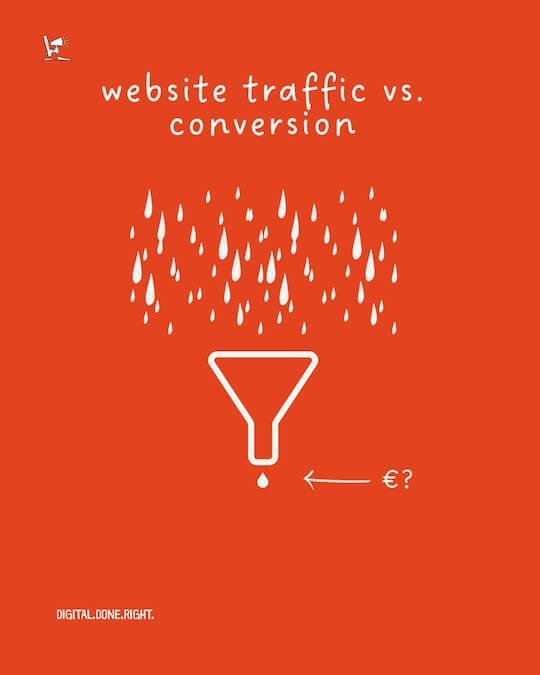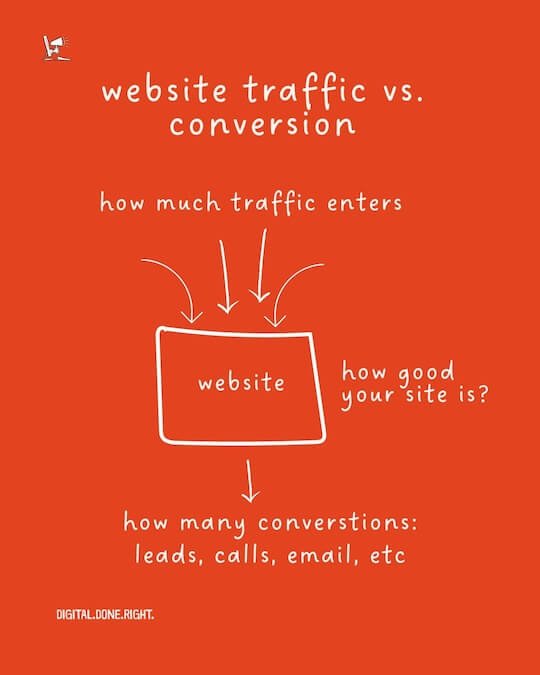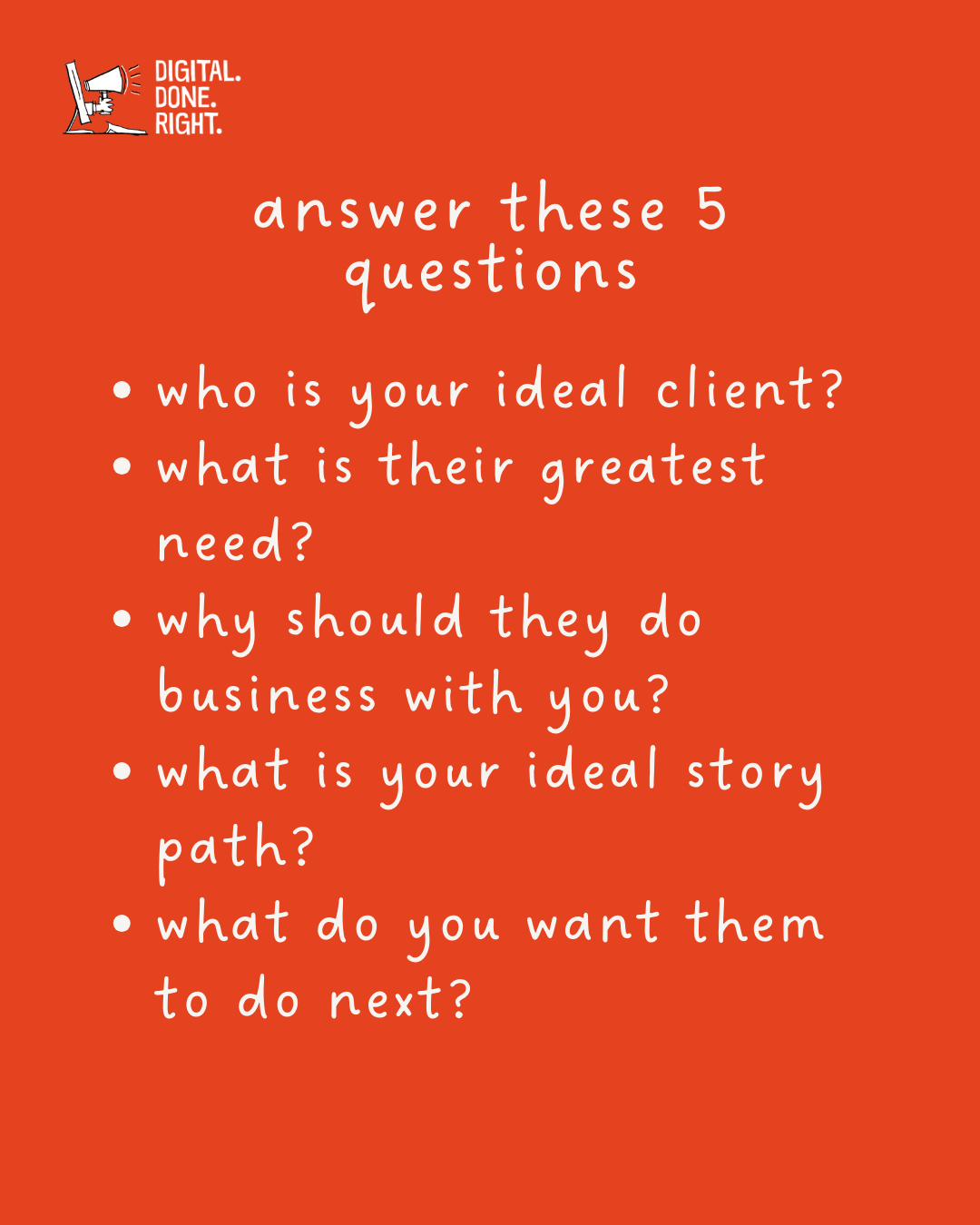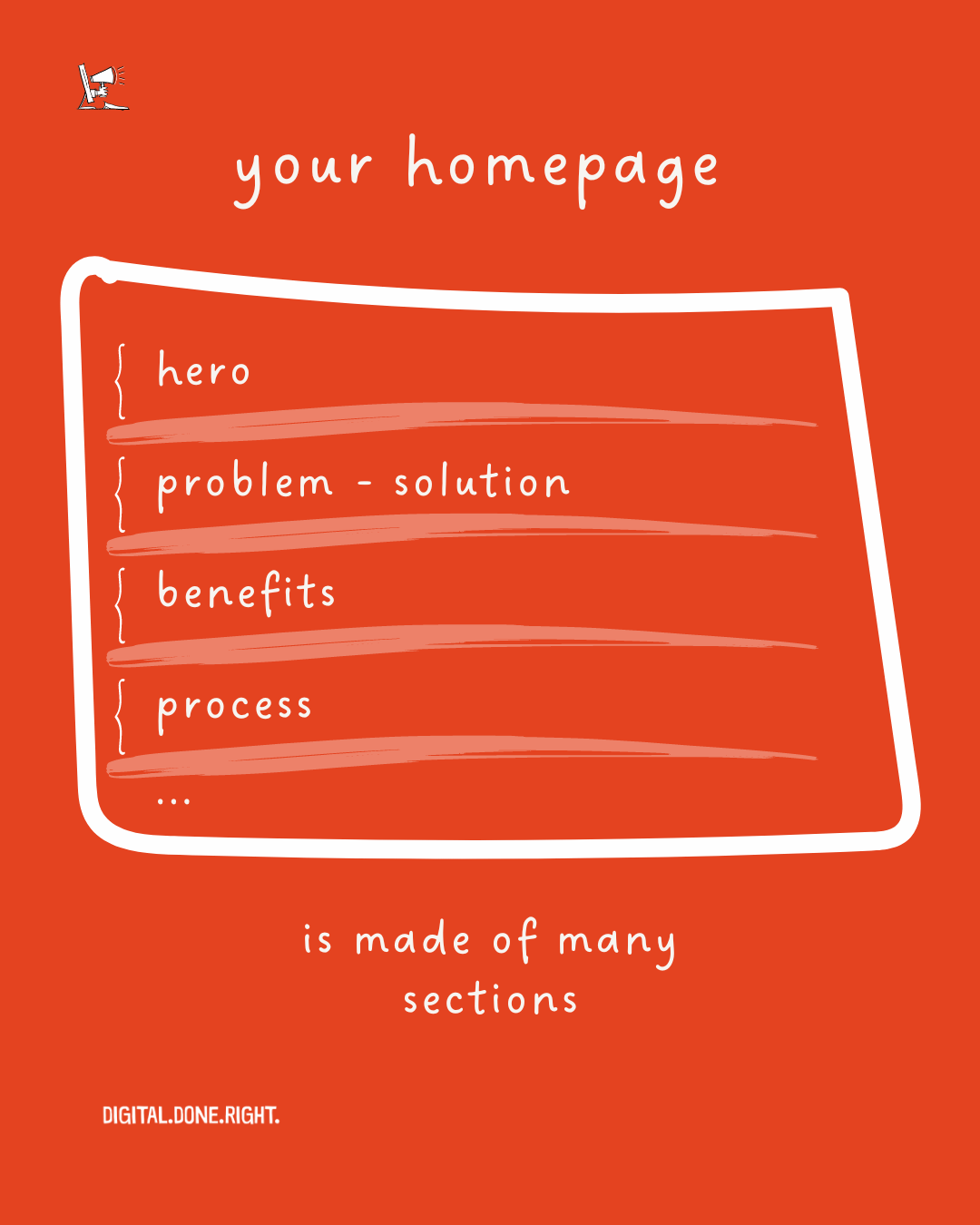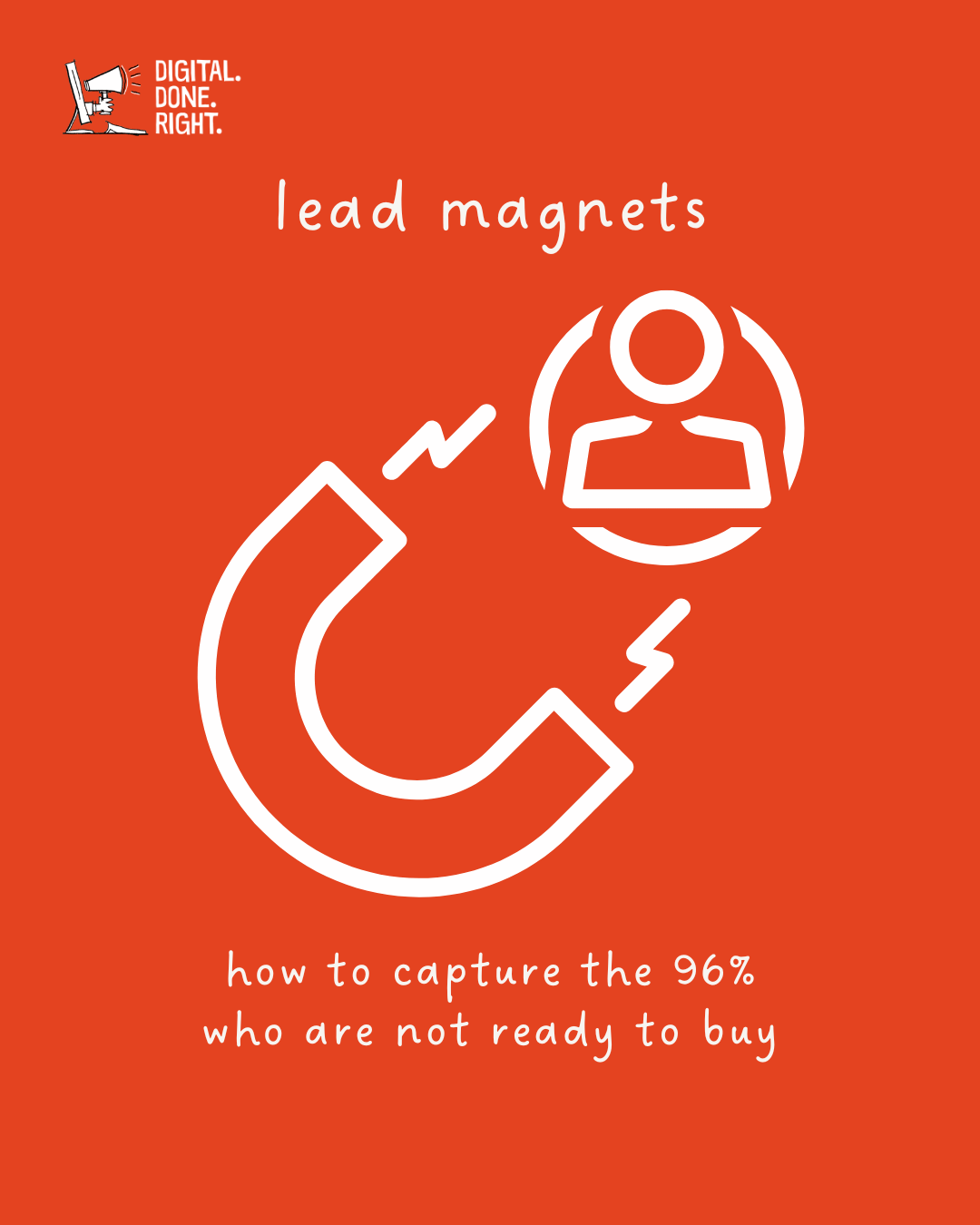Build Trust & Attract Clients: About Page Guide
🇩🇪 Lieber auf Deutsch? Klick hier
This is part 5 of a 6-part series on building the best website for your service-based business. Make sure to check out the previous chapters!
PART 5: WHAT ABOUT THE 'ABOUT' & OTHER PAGES?
The good news is that the other pages are much easier to design and build. Some of the elements or sections from the home page can be reused here, such as the CTA and social proof.
ABOUT US
You are in the service industry, and people do business with other people. People do business with people they trust. You have to earn that trust. Your About Us page is an opportunity to earn that trust.
Your About Us page is not just a formality; it's a chance to let the heart of your business shine through. This is where you connect with your audience on a personal level and make them feel like they're a part of your story.
The About Us page is probably the second most visited page on your website. This is where you explain who you are and what your business is about. Before we build your About Us page, let's look at some of the common elements.
"I WANT MORE SERVICE-BASED COMPANIES TO BE SUCCESSFUL WITH THEIR ONLINE ACTIVITIES!"
What is an 'about us' page?
Let's start with what an About Us page is not. It is not just about you.
This may sound harsh, but everything on your website is about your customers, and your About Us page is no different. Think about what the customer needs to know to gain more trust.
This is not the time to list all your credentials, qualifications, or the money you have made. Your home page is your storefront, while your "About Us" page is the "hello" and "welcome to my store. This is where you meet your customers and let them learn more about you.
Now that we know what the About Us page is for, let's look at the components that go into a good page.
TELLING YOUR COMPANY STORY: THE 'ABOUT US' PAGE
So, let's make your About Us page a compelling read, one that will have your visitors cheering for your company's success. Here are a few sections you can include on your About Us page.
The Spark That Lit the Fire: Your Company's Origins
Every business has an origin story, a moment when an idea became a reality. Share that spark with your readers. Tell them what inspired you and what drove you to bring your vision to life. This glimpse into your passion will ignite a spark in their hearts, too.
The Dream Team: Introducing Your Founding Warriors.
Your founding team is the heart and soul of your business. Introduce them with pride! Share their backgrounds, expertise, and personal journeys. Show the world why they're the perfect crew to captain your ship. This human touch will make your brand more relatable and endearing.
A journey of growth and triumph: From baby steps to giant leaps.
Take your readers through your company's journey, from its humble beginnings to where it is today. Highlight key milestones, the obstacles you've overcome, and the innovative solutions you've brought to the table. This narrative will showcase your resilience, growth, and commitment to excellence.
Navigate the future with a vision: Your North Star.
Your company has a purpose and a mission that drives its actions. Share it with the world! Articulate your mission, the essence of what you're trying to achieve. Then paint a vivid picture of your vision, the future you're dreaming of. This alignment of purpose and ambition will inspire your audience and make your company a beacon of hope.
Also, consider including a customer testimonial or video (social proof) to show that others have worked with you. Remember, this page is about building trust with the reader. Everything you put on this page should have that in mind.
Finally, a simple CTA with "set up a call" or "request an audit" to give them something to think about.
With these four key ingredients, you'll whip up an About Us page that will have your prospects swooning and your customers lining up. Combine these elements with a slick site builder and a touch of page design magic, and you'll turn every visitor into a raving fan.
But don't forget what your customers are craving. Your target audience is itching to see your company's mission statement, a dash of social proof, and a sprinkling of real-life product usage. These elements on your About Us page will add a layer of credibility and trust that will make your customers feel like they're part of your brand family.
Service page(s)
You are in the business of providing a service. That is probably why you are reading my website. By the way, I am glad you are here!
I don't need to tell you how important it is to have a page or pages describing your services. The range of services here is so wide that I will keep this section short.
If you offer a single service, then a single web page can probably cover all the necessary elements. However, this is the main point here on the service page, if you have multiple services then you will need multiple pages, one for each service. This is all aimed at SEO or improving your website for internet searches.
I have not covered SEO in this article, but each of your services is an individual search target. The key phrases or words that people use to find your service are highlighted on each of your service pages.
In this case, you could have a single main "service page" where each service has a short introduction with a button or link to the detailed service page. This sounds like extra work, but it will pay off. Having a page that says "I do minor auto repairs and also change tires" on a single page is not going to get you the traffic you are hoping for.
While we're talking about your services, let's jump right into a tricky subject - your prices.
PRICE TRANSPARENCY: SHINING A LIGHT ON YOUR SERVICES
Providing clear and transparent pricing information on your website can be a powerful strategy for attracting new customers and building trust. Many companies err on the side of caution, fearing that disclosing their prices will invite comparisons and drive away customers. But the opposite is often true.
By disclosing your pricing, you demonstrate confidence in your services and give potential customers a clear understanding of what they're getting for their money. This transparency builds trust and credibility, making your business more attractive to those seeking reliable and affordable services.
Plus, by listing your prices, you're essentially taking the guesswork out of the buying process. Prospects can quickly assess whether your services are within their budget and make an informed decision about whether to contact you. This saves them time and effort, which can lead to a higher conversion rate.
Of course, there are situations where it may be more strategic to keep your pricing confidential. For example, if you offer custom services or packages with different price points, it may be more effective to discuss pricing on a case-by-case basis. For most businesses, however, providing clear pricing information is a win-win strategy.
Why you should consider displaying your prices
Builds trust and credibility: Transparency builds trust in your business and demonstrates that you have nothing to hide. It shows potential customers that you're confident in the value you offer and that you're not trying to mislead them with hidden costs.
Improves the customer experience: By providing clear pricing information, you make it easier for prospects to compare your services to the competition and make informed decisions about their needs. This streamlined process can lead to a more positive customer experience.
Optimizes Conversion Rate: With pricing readily available, potential customers can quickly assess whether your services fit their budget and make a decision to contact you or not. This can significantly improve your website's conversion rate.
Attract price-sensitive customers: By displaying your prices, you're appealing directly to price-conscious customers who are looking for the best value for their money. This can expand your customer base and generate additional revenue.
While it's understandable to have concerns about posting your prices on your website, the benefits of transparency often outweigh the perceived risks. By providing pricing information openly, you can build trust, improve the customer experience, increase conversions, and attract price-conscious customers. Embrace price transparency and watch your business thrive.
FAQS: YOUR GATEWAY TO EASE AND EFFICIENCY
Frequently Asked Questions (FAQs) are an invaluable resource for any website, providing visitors with a quick and convenient way to find answers to their most common questions. These handy sections not only save time and effort for both visitors and staff but also improve the overall user experience and promote a positive brand image.
By clearly addressing frequently asked questions, FAQs help visitors quickly navigate your site and find the information they need without having to contact customer support. This can significantly reduce your support team's workload, allowing them to focus on more complex issues. FAQs can also help improve customer satisfaction by providing quick and accurate answers to their questions.
In addition to their practical benefits, FAQs also serve as a valuable marketing tool. By proactively answering common questions, you can demonstrate your expertise and credibility in your field. This can attract new visitors and establish your brand as a trusted authority.
FAQs: A must-have for any website.
Whether you're running a small business or a large corporation, FAQs are a must-have for your website. By adding FAQs to your site, you can improve the user experience, reduce customer support calls, and establish your brand as a trusted and knowledgeable resource.
Here are some additional benefits of FAQs
Improved Search Engine Optimization (SEO): FAQs can help improve your site's SEO by providing relevant keywords and content that search engines can index.
Multi-language support: FAQs can be translated into multiple languages to cater to a global audience.
Continuously Updated: FAQs can be easily updated as your products or services change.
FAQs are an essential component of any website, providing a valuable resource for visitors and a powerful marketing tool for businesses. By incorporating FAQs into your site, you can improve the user experience, improve your SEO, and establish your company as a trusted resource.
THE POWER OF TESTIMONIALS AND REVIEWS: TURNING STRANGERS INTO BELIEVERS
In the competitive world of professional services, building trust and credibility is paramount. And what better way to do that than to showcase the positive experiences of your satisfied customers? Testimonials and reviews play a critical role in establishing your brand as a reliable and trustworthy choice for potential customers.
Testimonials and reviews serve as social proof, providing tangible evidence of your expertise and the value you deliver. When prospects read positive feedback from people like them, it resonates deeply, making them more likely to trust you and choose your services. These glowing testimonials lend credibility to your claims and demonstrate the real-world impact of your work.
In addition to building trust, testimonials and reviews can also boost your site's search engine rankings. Search engines favor sites with high-quality content, and positive reviews are considered a valuable signal of authority. By including testimonials and reviews on your website, you'll not only improve your brand reputation but also increase your website's visibility.
Testimonials and Reviews: Your Path to Customer Acquisition.
Testimonials and reviews aren't just for reassuring existing customers; they're powerful tools for attracting new ones. When prospects see positive feedback, they're more likely to click through to your website, learn more about your services, and even schedule a consultation.
In a competitive market where consumers are bombarded with countless choices, social proof is more important than ever. By displaying testimonials and reviews, you're creating a compelling narrative that speaks volumes about your brand and its commitment to exceptional service. Embrace the power of positive feedback and watch your business flourish.
Additional pages
There are other pages you may want to have on your website, such as 'Contact Us'. This can be useful if email is of primary interest. Giving space for the visitor, uhm, potential client to write what they are interested in talking to you about allows them to express themselves.
A portfolio page can be very useful to show the visitor your previous work. This helps to build trust and authority. You could also use a blog format for your portfolio along with other articles you want to share. Blogs are very useful for SEO because they keep your website "fresh". This freshness tells the search engine and the visitor that the business takes its website seriously
WHAT? THAT'S IT?
You have made it this far and that is a lot of ground we have covered. I started covering the "Big End of the Funnel" and the process of "inviting" people into your business as the first step. Like any business owner, you need a storefront, and as a service business, your storefront is your website. Making it inviting and providing what the visitor expects is the first step.
Next, I went over who your website is for and what it is not there to do - be a museum! I discussed that our primary expectation is to convert website visitors into potential customers. This means defining your number one call to action. Sure, you can have a secondary CTA, but you are not the library. Be clear and tell visitors what you expect them to do next.
The following chapter outlines the components of a service-based business website and the four questions you need to answer: what does your customer need, why are you the right partner for them, what is their ideal story path, and what is the CTA? This chapter was packed with so much information that you may want to revisit it at another time. Bookmark THIS for future reference.
The 10 Elements of a Service-Based Business Homepage was next. Were there any surprises? There were probably some you recognized but never thought had a name. By naming or defining them, you give them a place for structure. The structure is what many business websites lack. Many are cobbled together using a predefined template and done.
Finally, this chapter covered those additional pages your site could or should have, such as the About Us page. Again, with a name and structure, you can now go out and build your page using some of the ideas I have described here. Having individual service pages may just seem like extra work, but remember chapter one is the big end of the funnel. You want to attract visitors and most of your new customers will come to you through search. Take the time to build the best website you can. It will pay off.
SO, WE MUST BE DONE, RIGHT?
No, there is one more. This series of articles is called "Designing a 'Client Generating' Website for Service-Based Businesses." That "client-generating" piece is what comes next.
But you need to head over to the next chapter!
TL;DR
This page walks you through designing a client-generating website for service-based businesses.
It covers various aspects such as the importance of the "About Us" page, service pages, price transparency, FAQs, testimonials and reviews, and additional pages like contact and portfolio.
The goal is to create a compelling website that attracts visitors, builds trust, and converts them into customers.
👆🏻 Back to Top 👆🏻



